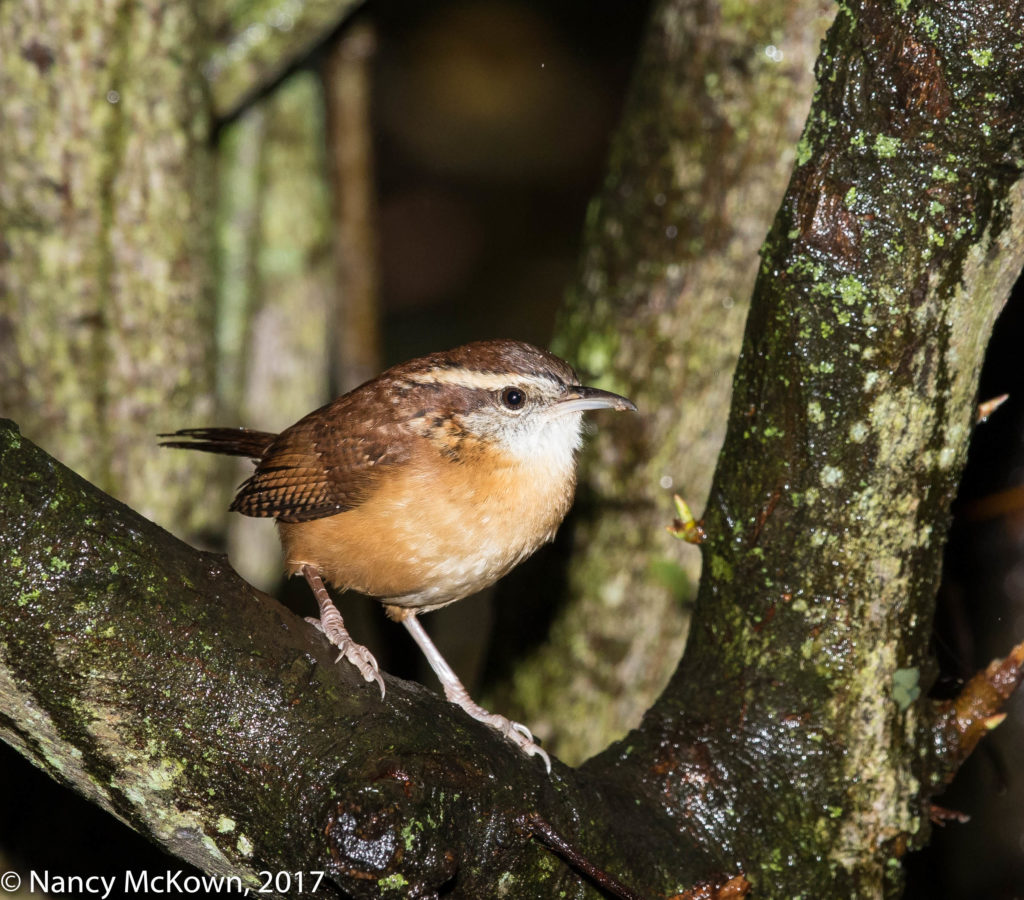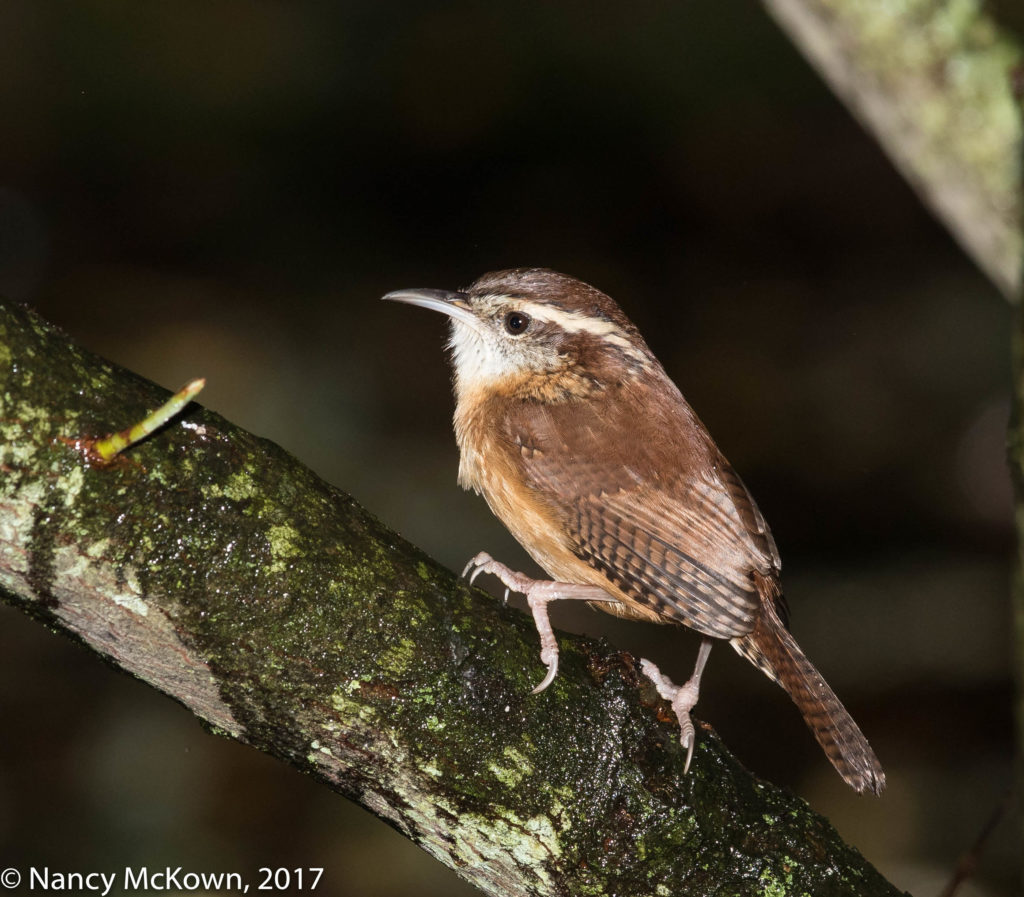Photographing A Carolina Wren
As much as I would like to have bright, even light when I photograph migrating birds, I rarely do. The migrators take advantage of the best weather conditions and keep going. The more fierce the rain, wind and cold, the more likely they will descend to avoid the possibility of getting lost, conserve their energy and wait out the inclement weather in the understory trees. Once down, they can take cover, get a little food and rest and keep an eye out for predators. (NOTE: Small birds are not as efficient in flight as large birds, especially when conditions are poor.)
There is little reason to set up the camera rig by the fountain when it’s raining. Instead, I position the camera near low lying trees and bushes and hope a new bird will venture close by. This little, soaking wet Carolina Wren made my day. Despite the rain, he started to sing….an intricate and lovely set of bird vocalizations. (Visit this link to hear them.) These wrens are large and hardy, as wrens go, and not particularly shy. They are not easily shoved aside by the bigger birds at the feeder or the fountain. The last time I photographed a Carolina Wren in our yard was a feeder shot in January, 2014.

Resting on Oversized Perch.
ISO400; f/7.1; 1/250 Second
Algae, Lichen and Moss
I like the look of the flourishing algae, lichens, and moss that embed themselves in tree trunks and branches in our yard. These living organisms thrive everywhere in our damp woods and are ubiquitous on the perches of many of my bird images. If the light is right during or shortly after a rain shower, they reflect little explosions of rugged patterns, textures, lines, and lush colors.
Oversized Perches
Does the perch overpower the bird in these images? Ideally a more delicate natural perch ¼” to ½” in diameter would have looked better- more proportional to the size of the bird. The Serviceberry nearest to the house is a multiple stemmed tree situated approximately 15 feet from the camera. The forked branch upon which this Carolina Wren perches is close to the base of the tree and a little over an inch in diameter. (NOTE: It looks like a bigger branch, but it’s the small size of the bird (4.9 – 5.5 in.) that makes his perch look oversized.)
The bird looks comfortable perching here…and safe…despite the perch’s diameter. Maybe that should be the determining criteria.

ISO400; f/7.1; 1/250 Second








